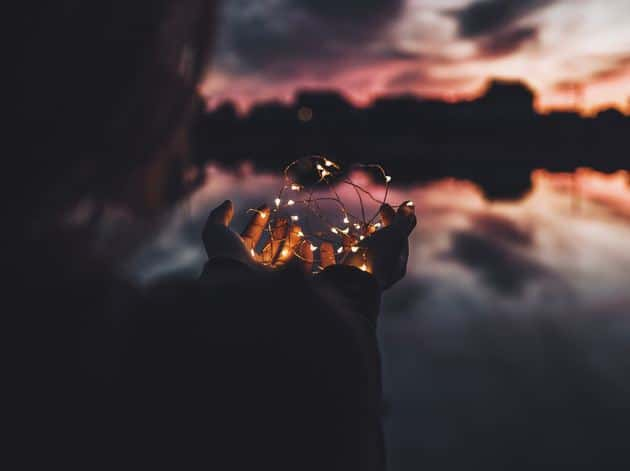Getting into photography is as exciting as it is confusing. Undoubtedly you have all these great ideas of photos you’re going to take, but when it comes down to actually shooting them, they just aren’t coming out as you had hoped. The good news? One, you definitely aren’t the first to have this happen. And two, there are very simple tricks that can vastly improve your shots.
So how do you take good pictures as a beginner?
Clearly you’re here because you want to know how to take better photos, but maybe you’re not sure where to start or what you’re doing wrong. Don’t worry: we know learning new things can be overwhelming, so we’ve narrowed down 10 photography tips that are easy to follow even as a complete beginner.
- Move around to find good angles
- Use a good light source
- Don’t use your camera’s flash indoors
- Keep your subject centered
- Focus on the important details
- Take your time (and plenty of photos)
- Master editing tools
- Add props
- Ensure image quality is good
- Watch photography tutorials
Let's dive into these in more detail.
1. Move around to find good angles
Angles matter when it comes to photography — in fact, they can make all the difference. In an otherwise 2D world, using angles can add a lot of depth to your photo. And the best way to ensure you’re getting some good angles is to move around during the shoot.
One of the biggest mistakes beginner photographers make is being stationary for the entire duration of the photoshoot. Moving around the subject or moving the subject itself can change the entire perspective of the shot and give you a good variety of photos to pick from when you’re done.

2. Use a good light source
Without proper lighting, your camera will be forced to make up for the lack of light, causing excess grain and blur which often is not rectifiable. While you don’t need an expensive light setup as a beginner, having an external light is always handy for those unexpected dark dreary days. But it’s not just about having good light — it’s also about knowing how to position yourself and your subject in it. Thankfully, there are some basic photo tips you can keep in mind.
If you’re photographing people, animals, and even some objects, make sure the light source is positioned in front of the subject to illuminate the focused features and eliminate any unideal shadows. However, the opposite is advisable for landscapes: side-lighting is usually the best option for these photos, as it will enhance the shadows and contour of the landscape.
If you do choose to utilize an external light, don’t set it up to be too bright or too dim, because that can over- or underexpose your shot. Equally as important is the bulb color: it can change the look of the shot, making it too “warm” or too “cool.”

3. Don’t use your camera’s flash indoors
Since we’re already on the topic of lighting, everyone is familiar with the camera’s flash, but not as familiar with how and when to use it. Flash should hardly ever be used inside (not to be confused with external flash, which definitely can be).
The flash we’re talking about is the built-in flash that comes with your camera. This feature can come in handy under the right circumstances, but for the most part it is misused, often causing the infamous red-eye glare and overexposed subjects. If you want to use a flash indoors, get an external unit compatible with your camera. It can be positioned elsewhere other than directly in front of your subject, which will help avoid the red-eye effect.
4. Keep your subject centered
There are so many variables with lighting and angles that centering is a breath of fresh air. Centering is pretty straightforward: always keep the subject of your shot level and center in your viewfinder, since there’s nothing more cringy than an otherwise great photo ruined by a tilt. Yes, you can usually remedy slight tilts in a photo editor, but it requires the photo to be cropped, and depending on how severe the slope is, you’ll be cropping into the subject of the photo.
Most viewfinders have a grid line, so you can easily tell if your subject is straight and centered.
5. Focus on the important details
Focusing is also an easy thing to get right the first time around, since most digital cameras are set to auto-focus. On most cameras you can switch to manual focus — a handy feature when the auto focus isn’t recognizing your desired focal point (a common problem in macro and portrait photography). Properly setting the focus on the subject of your photo will ensure that the important details appear crisp, clear, and outstanding.

6. Take your time (and plenty of photos)
Sometimes nerves, excitement, or just lack of experience make you cut a shoot short prematurely, and often you won’t have the chance to redo it ever again. That’s why when you commit to doing a shoot, take your time to ensure you have the content you need. Always take a good variety of shots including some with different lighting and from different angles.
Just as important as taking lots of photos is sorting them out after you move them to your Mac. Otherwise you’ll soon find your photo library drowning in similar shots, most of which are redundant. To avoid that, download Gemini 2 for Mac: it scans all your photos, groups duplicate and similar shots, and lets you quickly delete the ones you don’t need.
7. Master editing tools
No matter how good your photo may look straight off the camera, it can definitely be enhanced with a little photo editing. A quick Google or App Store search will give you access to hundreds of photo editing tools, many of which are free to use. Common ways to enhance photos are to increase the brightness, sharpness, and remove any visible blemishes, but since every photo is different, they will require individual enhancing, so experimenting is key.
8. Add props
Depending on the theme of your photoshoot, props can add an extra umph to really make your photo pop. The best thing about props is that they don’t have to be expensive or over the top to completely reinvent the entire theme of the shoot. A good example of a cheap and effective prop is a string of Christmas lights used to make a bokeh background effect.

9. Ensure image quality is good
Your camera is probably set to take the highest quality photos, but sometimes things happen and settings get changed. If at any point you notice that the file size of your photos has decreased, you can assume that so has the quality.
This is also a common problem for photographers who use free photo editors. Sometimes apps compress your photos for no other reason than to have you pay to export full-size edits. Any time an app compresses your image file, the quality takes a huge hit. That’s why whenever you’re using a new editing tool, check the file size after import and export to ensure the quality wasn’t changed.
Why is this important? You probably won’t notice much of a change on a small screen, but if you ever need to print the photo, your size options will be severely limited.
Watch photography tutorials
Some of the best photographers are completely self-taught, using nothing but internet tutorials for mentorship. With all the knowledge posted on the web, if you ever have any questions on how to do something, the answers are a quick YouTube search away. Video tutorials are easily one of the most helpful teaching tools, usually free of charge and easy to recreate with your own camera.
Starting out may be daunting, but with a little practice and these basic photography tips, you’ll be taking good photos within days. Believe it or not, even professionals had to start somewhere, playing with angles and struggling with light for their very first time.





